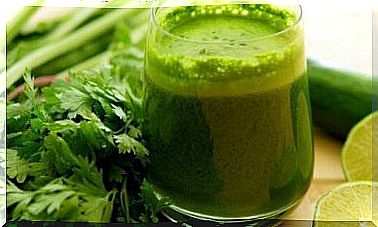5 Vegetable Sources Of Omega 3 Acids

Omega 3 fatty acids are polyunsaturated fats and, together with Omega 6 fatty acids, form so-called essential fatty acids. They are essential for the body because the human body cannot produce them on its own. Therefore, these fatty acids must be obtained from the foods we eat. Fortunately, there are many plant sources of Omega 3 acids.
The benefits of Omega 3 fatty acids

5 plant sources of Omega 3 acids
Below, we will explain the nutritional properties of the five main vegetable sources of Omega 3 fatty acids, which you should include in your daily diet to enjoy optimal health and to prevent the occurrence of many diseases. However, don’t forget that there are other vegetable sources of Omega 3 fatty acids besides those mentioned below!
1. Flaxseed oil and olive oil

Flaxseed oil consists of 75% Omega 3 fatty acids and 25% Omega 6 fatty acids. It is a very important food for prostaglandin metabolism because it regulates inflammation. One tablespoon of flaxseed oil contains about seven grams of Omega 3, being one of the most important vegetable sources of fatty acids.
Olive oil has a high content of polyunsaturated fats. It is very simple and healthy to add a drop of olive oil to salads or eat it on wholemeal toast.
2. Microalgae
“Microalgae” are small types of algae, such as Chlorella.
Chlorella is the richest algae in Omega 3 fatty acids and is followed by spirulina and Klamath, although the latter contains low doses. In addition to the fact that these algae contain Omega 3 fatty acids with anti-inflammatory action, they have important antioxidant effects.
3. Romanian nuts
Romanian walnuts have a balanced ratio of Omega 3: Omega 6 of 5: 1. By consuming 14 nuts (about 60 g), you will cover 50% of your daily requirement of Omega 3.
4. Chia seeds

Chia seeds are another important source of Omega 3 fatty acids, along with flax seeds. They contain 33% fat (62% Omega 3 and 20% Omega 6). However, do not forget that you must soak these seeds before consuming them.
Many people, especially vegetarians, have started consuming chia seeds more and more often. Thus, this product, which was first launched in specialty stores, is now easy to find in supermarkets.
5. Lawyer
Avocado fruit is becoming more and more popular. Some diets focus a lot on it due to its nutritional values. Avocado is one of the most important plant sources of Omega 3 acids.
Some neurologists believe that avocado is one of the best foods to keep the brain healthy and prevent Alzheimer’s disease.
conclusions
All these vegetable sources of Omega 3 fatty acids can help you follow the recommendations of the World Health Organization regarding the intake of fatty acids. It is important to note that certain sections of the population are more sensitive to this deficiency, such as children whose brains are developing. Therefore, do not forget to include foods rich in Omega 3 fatty acids in the diet of all family members to be healthy and prevent disease.









